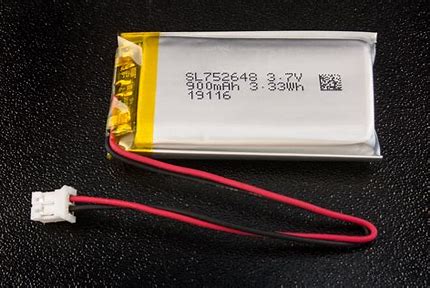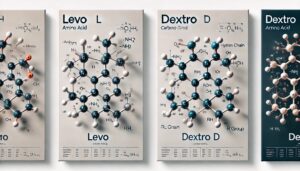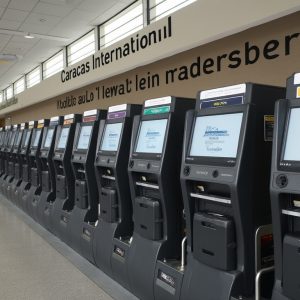BLACK MASS? THE TORONTO INTERLUDE
by Jeemes Akers
“Black Mass is what you obtain once a [lithium-ion] battery has been processed for recycling. Batteries are composed of metals including lithium, manganese, cobalt, and nickel. Once a battery reaches the end of its service life, it is collected, dismantled, and shredded. The shredded material is then processed to produce ‘Black Mass’, which contains high amounts of these metals.”
Jacques David[1]
“Recycling these [lithium-ion] batteries is still a complex, costly process: the collection and transportation of spent batteries make up nearly half the cost of recycling … [a process that will] become more challenging around 2025, when tens of thousands of EV [electric vehicle] batteries will start to reach the end of their lifespan.”
Rebecca Leber[2]
It all started—as have many of my recent adventures—with a note from my former student and CEO of Westwin Elements Inc., Ms. KaLeigh Long. “Jeemes, would you be interested in a trip to Toronto to see Kamran’s refinery?”
Of course, I said yes.
And so, Ima dropped me off at the Charlotte Airport. (We are still on Ima’s grand post-retirement tour.)
An uneventful flight to Tulsa followed.
Katie was nice enough to pick me up.
We made a quick stop at the Chic-fil-A in Bartlesville.
Then out to KaLeigh’s house.
She was preparing for a small group meeting from her church.
We picked up some Tex-Mex and drinks in town.
Then it was a night of prayer and worship songs with a handful of like-minded believers as the sun went down over the ranch country of Oklahoma.
Afterwards, a long talk about all things spiritual with Brian, KaLeigh’s dad, in the “great room” of their cattle ranch home before retiring.
Martha made a tasty breakfast the next morning before KaLeigh picked me up.
Then we—KaLeigh, Ryan J., Randy P. and two photographers—boarded Randy’s private jet for a short flight to Lawton, Oklahoma, to meet with city officials and look at the piece of property in the city’s industrial park where our cobalt refinery (the nation’s first largescale refinery of its type) will be located.
In truth, the entire trip was arranged for Randy’s benefit. Randy—a likeable native Texan who made his fortune in oil and real estate—had recently become our largest individual investor. He told me he was attracted to Westwin Elements for at least four reasons: his interest in supporting a wholly Christian-run project, his desire to leave a large and meaningful final “legacy” gift, his patriotic desire to support a U.S.-based strategic minerals initiative, and, finally, a desire to get in on the ground floor of a project with the potential to return a huge profit for the initial tranche of investors.
It was the second time I’d been with Randy.
After our whirlwind visit to Lawton, we reboarded the small jet for a flight to Toronto, Canada. We made a brief custom’s stop in St. Louis (with a sudden crosswind, as we approached the runway, that pushed our small jet around like a small maple leaf in a windstorm). KaLeigh said it made her stomach queasy. The whole experience reminded me of the many landings aboard the “hognose” RC-135 at Kadena AFB during the Vietnam years. One young pilot in particular—I forget his name after all these years—who, when we found out he was in the cockpit, prompted all of us crew members to place bets on how many times he would “bounce” the plane on landing. (Any number above four generally was a pretty good bet!)
After an uneventful take-off, we headed for Canada. On our final approach to Toronto Pearson International Airport, all of us onboard experienced a visual treat; an incredibly beautiful sunset, painted in hues of red, purple and orange, stretching above a vast urban landscape of lights below, each dazzling like a beautiful gem in the growing darkness.
Once on the ground, two Uber cabs whisked our party to an upscale French Restaurant where Kamran Khozan and two individuals associated with his firm, CVMR, awaited.
Kamran was in rare form. He regaled Randy and others close to him with stories of his travels and various business ventures. Of course, as his wine glass was constantly refilled, the jokes began flowing out of him like the waters of the Amazon. I’ll only repeat one of them. (Even though I can’t write a joke nearly as good as Kamran can tell one).
A Jamaican was walking along the seashore and up washed an Aladdin-type lamp. He dutifully rubbed the lamp, and a genie pops out. “I’ll grant you three wishes,” the genie says.
“I want to be white,” the Jamaican says.
“And your second wish?”
“H-m-m. I want to be surrounded by water,” the Jamaican said as he scanned outward from the crowded beach over the ocean waves.
“And your third wish?”
The Jamaican looked down the beach. “I want to be able to see brown, female Jamaican asses every day!”
Poof!
He was turned into a toilet bowl.
During the dinner I sat next to John, Kamran’s longtime corporate attorney and CVMR board member. We had a nice conversation about his law practice, his family, and his disappointment with the various Toronto-based professional sports franchises.
All-in-all, it was a charming evening.
After the dinner, we stayed at a nice hotel in downtown Toronto.
Our team spent most of the next morning at Kamran’s refinery. We observed first-hand what our first module would look like—the build-out for Westwin Elements in Lawton OK will be much larger in scale. There were various gauges, dials, canisters, and pipes, as well as samples of nickel and copper ore containing cobalt deposits. Kamran was particularly excited to show us a box of hardened black globs, “vacuumed from the Pacific Ocean floor shelf off Seattle” which could serve as a future source for strategic minerals including cobalt. Victor, (Nanthakumar Victor Emmanuel), Kamran’s unassuming chief scientist and vice president for production (with some 90 metallurgical patents to his credit), stirred and tested some lithium brine as we walked through.
I first met Victor during our trip to Midland-Odessa, Texas, and liked him immediately.
I noticed one area which was obviously off-limits to us during the visit to Kamran’s facility. The doorway was constantly guarded by a couple scientists (or at least a couple individuals looking the part) garbed in long, white laboratory gowns. When one of our group asked about it, Kamran apologized, looking at me as he spoke, saying that his company was involved in a number of classified projects with various U.S. agencies (ostensibly DARPA, DoE’s national labs, and DoD among them). We lacked the appropriate clearances.
His explanation made sense.
Nevertheless, I sure wanted to take a peek.
I would be willing to wager that projects involving a number of other countries were there as well.
Victor drove us to the airport after our tour ended. I was sitting in the front passenger’s seat. He is so quiet and unassuming, yet brilliant. The only topic he feels comfortable talking about is his family. He is most proud of his youngest son, who is a tennis player ranked number six globally in his age bracket. His son wants to attend M.I.T.
Victor said he would be the one helping us with the technical details of the building and initial operational activities at our refinery in Lawton.
I was glad to hear that.
During our conversation (with the off-limits room in mind), I asked him if the Jilin refinery in China was still up-and-running. Victor spent several weeks in China, advising on the Jilin refinery as it was being built (ours will be similar in size). I had heard Kamran say several times (during his presentations in Texas and Oklahoma) that China still owed him $300 million on the project.
“Victor, are you still working with technicians on the Jilin refinery?” I asked.
“Yes,” he replied.
“But I have heard Kamran say many times how much money China owes him?”
“The squabbles between management have nothing to do with us technicians,” Victor replied without batting an eye.
Scientists—and technicians—have a way of preserving their linkages.
KaLeigh and Ryan were sitting in the back seat.
“How effective will your process work in extracting cobalt from Black Mass?” KaLeigh asked.
It was the first time I had heard the term used. All three of them engaged in a Black Mass-related conversation as it pertained to the future refinery.
I listened, nodded when appropriate and tried to act like I knew what they were talking about.
In truth I didn’t have a clue.
I’m sure some of you have been in similar situations.
All this, mind you, despite the fact that Black Mass and the whole battery recycling process is illustrated in an entire page in our company prospectus that we handed out to prospective investors in Texas and Oklahoma. Still, I had no idea what the term really meant.
I started digging.
Later, I found out that Joanna, one of the key players at Westwin Elements, has been attending black mass conferences and enlisting prominent Black Mass-related companies to provide raw material for our cobalt refinery.
So, let me make four brief points about the topic of Black Mass:
First and foremost, Black Mass will be with us for the foreseeable future. Why?
Most importantly, the growing demand for electric vehicles means advanced battery systems and the need to eventually dispose them. In today’s news alone, I read that Taco Bell food chain in California—of course—will put in EV car charging stations.[3] (California lawmakers voted recently to ban the sale of gas-powered cars by 2035 and the state now accounts for 39% of EVs nationwide, followed by Texas.[4]) According to another story today, in China the Shenzhen-based BYD recently dethroned Elon Musk’s Tesla as the world’s largest EV assembler; by 2030, three out of every five vehicles sold in China will be powered by batteries, according to Swiss Bank predictions.[5] Earlier this week, President Biden announced that $2.8 billion in grants to boost U.S. production of EV batteries and the minerals used to build them, part of an effort to wean the country off supplies from China.[6] The administration’s goal; by 2030, 50% of all new vehicles sold in the U.S. to be EVs or plug-in hybrid electric models along with 500,000 new EV charging stations.[7]
So what? The demand for ever more capable EV batteries requires more strategic minerals—cobalt, lithium, manganese and nickel. Aside from mines in areas controlled by China, or otherwise difficult to access, the other place to look is in batteries that already exist.[8]
That is where Black Mass comes in. Today’s lithium ion (hereafter Li-Ion) batteries have a shelf life and must be disposed of somehow.
Secondly, Black Mass cannot be separated from the broader topic of recycling. And Americans are notoriously poor recyclers. Some estimates show as little as five percent of today’s Li-Ion batteries end up recycled, most ending up in the trash, stored indefinitely, or exported as waste instead.[9]
Thirdly, as Victor explained during our car ride, there is no one-size-fits-all process to extract cobalt from Black Mass. Any estimate of the purity of the final refined product varies from one sample to another.
Why?
The composition of Black Mass is diversified because the composition of Li-Ion batteries vary significantly from one producer to another and from one application to another.[10] In Toronto, Michael Hargett (CVMR President) and I—in discussing the future of EVs—talked at length about this lack of standardization in the industry. For example, the world’s largest Li-Ion battery producer, Contemporary Amperex Technology Co., Ltd., (CATL) [Ningde Shidai] controls almost 33% of the world market share. CATL’s CEO Robin Zeng (China’s so-called “Battery King”),[11] has carved out a niche for the company in special arrangements with foreign car producers such as Tesla, Toyota, BMW, Honda, Volvo, and Volkswagen. My point: CATL designs Li-Ion batteries specially tailored for each of these companies, and for each model type within these companies. While that is an important aspect of Li-Ion battery production, it means that the process for extracting cobalt from the respective Black Masses will differ from batch to batch.
And that is a huge problem for the Victors of the world.
And, ultimately, a problem for Westwin Elements.
Fourthly, and unsurprisingly, America lags far behind in Black Mass re-cycling facilities. With few plants for Black Mass open in the U.S., DoE estimates show that a typical Li-Ion battery has to travel some 50 miles for dismantling and then another 1,000 miles for processing.[12] (By comparison, traditional lead-acid batteries used by combustion-engine cars, a technology that has been around for nearly a century, is among the best recycled products in the U.S. with reuse rates near 100%[13]). The costs of EV battery recycling are costly: recycling costs in the U.S. are $50 per hour, compared to $7.50 in China.[14] Today, as a result, the major Black Mass recycling facilities are located in China, Japan and South Korea, some dealing with more than 50,000 tons per year.[15]
And all this discussion focuses solely on the burgeoning future EV market. I haven’t mentioned the future flood of Li-Ion batteries from factory forklifts or other material handling systems, golf carts and airplanes.
Bottom line: for Westwin Elements and its future cobalt refinery, Black Mass could provide a promising source of raw materials from which to extract cobalt using Kamran’s proprietary chemical vapor metal refining methods.
At least in the short term.
[1] Jacques David, “Black Mass one of the hottest issues in battery recycling,” Recycling Magazine, Oct. 9, 2021. See also, Elliott Ethridge and Frederick Kuhn, “Let’s Talk Recycling: What is ‘Black Mass’”, BASF Catalysts, Jul 13, 2021.
[2] Rebecca Leber, “The end of a battery’s life matters as much as the beginning,” Vox, Oct. 17, 2022.
[3] Orlando Mayorquin, “’EV charge and a chalupa’: Electric car chargers are coming to over 100 Taco Bell locations,” USA Today, Oct. 19, 2022.
[4] See, “Electric Vehicle Registrations by State,” U.S. Department of Energy, afdc.energy.gov.
[5] “Electric cars: China’s BYD extends lead over Tesla after stealing its crown, as Chinese drivers opt for cheaper models,” South China Morning Post, Oct. 20, 2022. Note: BYD—“Build Your Dreams” in Chinese—is a publicly listed Chinese manufacturing conglomerate headquartered in Shenzhen, founded by Wang Chanfu in February 1995. The company started out as an EV battery manufacturer and now sells EVs at a much cheaper price than Teslas or Chinese EV rivals Nio and Xpeng. The company attracted the attention of global investors when Berkshire Hathaway paid over $232 million for stock shares in 2008 (recently sold). China, the world’s biggest EV market, is expected to double this year to six million units. On a personal note, many scenes from my futuristic novels are set in Shenzhen.
[6] David Shepardson and Ernest Scheyder, “Biden awards $2.8 billion to boost U.S. minerals output for EV batteries,” Reuters, Oct. 19, 2022.
[7] Ibid.
[8] Leber, “The end of a battery’s life.”
[9] Ibid.
[10] David, “Black Mass.”
[11] See, Tyler-Dudley, Davis et al, “CATL: China’s Battery King,” May 6, 2021.
[12] Leber, “The end of a battery’s life.”
[13] Ibid.
[14] Ibid.
[15] David, “Black Mass.”




